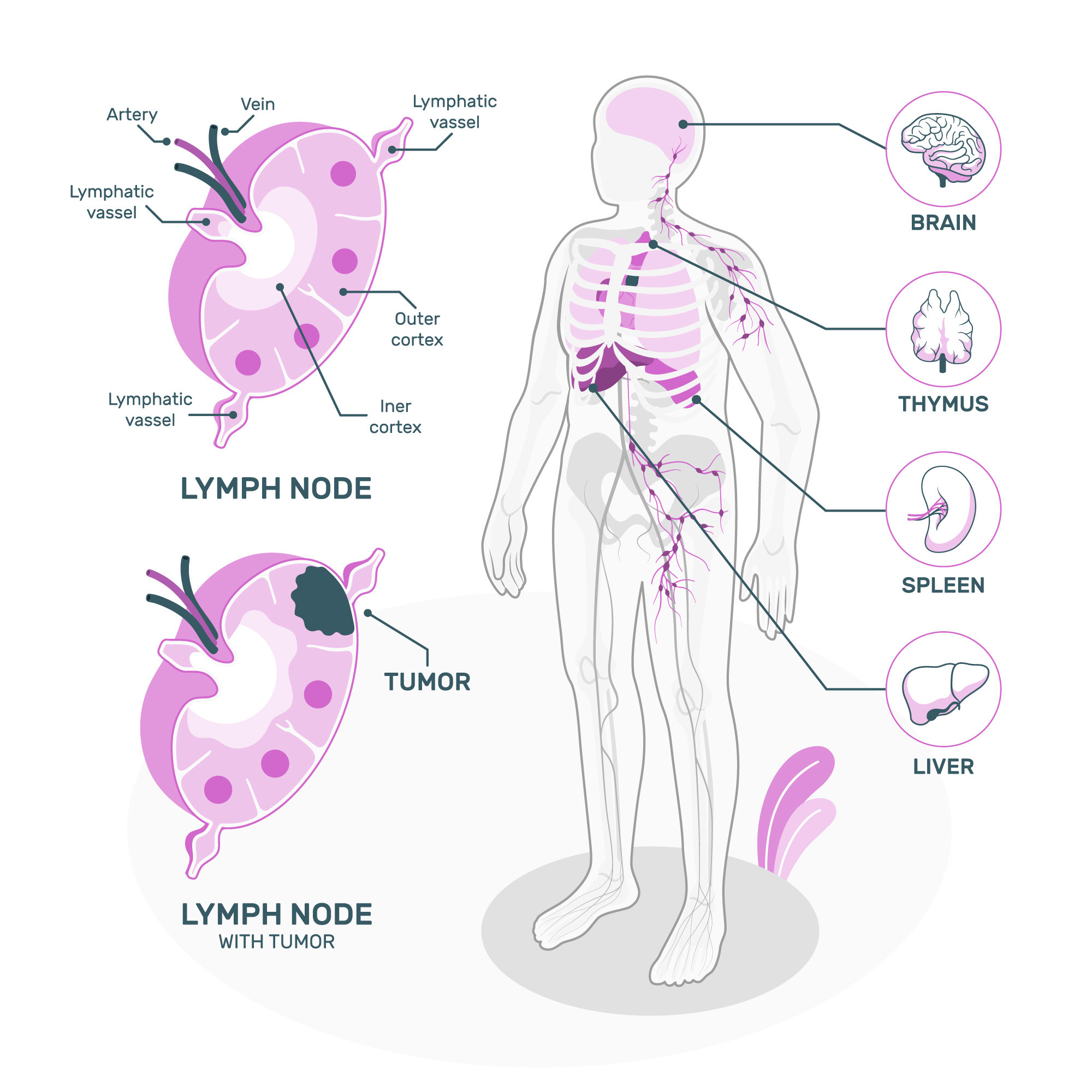Definition
The term leukemia comes from the Greek, "leukos" meaning white and "haima" meaning blood. Therefore, based on its definition, leukemia is a type of blood cancer characterized by the rapid and abnormal growth of white blood cells. This uncontrolled growth typically involves immature white blood cells that are still developing.
Unlike most types of cancer, leukemia does not form clumps or lumps (tumors) that appear on diagnostic tests like X-rays or CT scans. Leukemia occurs in the soft inner tissue of the bone marrow, where blood cells are formed. Before reaching maturity, blood cells go through several stages. Myeloid cells develop into red blood cells, platelets, and white blood cells such as basophils, eosinophils, and neutrophils. Lymphoid cells develop into white blood cells like lymphocytes and natural killer cells. In people with leukemia, one of these blood cell developments becomes uncontrolled.
Chronic leukemia occurs when leukemia happens between immature and mature cells. The onset of chronic leukemia is slower compared to acute leukemia, which occurs more rapidly and requires immediate therapy. If you have chronic leukemia, you may not notice any symptoms for several years. Chronic leukemia commonly occurs in adults rather than children. Chronic leukemia itself has two types:
- Chronic lymphocytic leukemia which is most common in adults aged over 65 years.
- Chronic myelogenous leukemia a chronic leukemia that can affect adults of various ages but rarely occurs in children.
Causes
Leukemia begins when genetic changes (mutations) occur in the DNA of the bone marrow. DNA is the "instruction code" that informs cells how to grow, develop, and die. These genetic changes disrupt the balance between blood cell growth, development, and death.
Risk factor
Until now, researchers have not definitively identified the cause of these mutated cells, but they have identified several risk factors that increase the risk of chronic leukemia, such as:
- Family history: Some studies indicate that individuals are 2-4 times more likely to develop leukemia if there is a family history of the disease.
- Age: Leukemia is more commonly diagnosed in individuals aged 71.
- Gender: Males have a greater risk compared to females.
- Exposure to certain radiation or chemicals: This risk factor is more common in chronic myeloid leukemia.
- Monoclonal B-cell lymphocytosis occurs when you have higher B-cell counts than normal. If you have this condition, you may have a higher risk of developing chronic lymphocytic leukemia.
Symptoms
Chronic leukemia can go unnoticed (asymptomatic) for several months or years. Some common symptoms that may arise from chronic leukemia include:
- Long-term fatigue: Chronic leukemia affects red blood cells, leading to anemia, a common symptom of fatigue.
- Recurrent or prolonged fever: This occurs because chronic leukemia affects the health of white blood cells, increasing the risk of infection.
- Swollen lymph nodes: Lumps due to swollen lymph nodes can be found in the neck, under the armpits, or abdomen.
- Night sweats.
- Unexplained weight loss.
- Pain or fullness below the ribs.
Diagnosis
The doctor will inquire about symptoms and perform a medical history and physical examination to diagnose symptoms suggestive of chronic leukemia. The doctor may suggest several tests, such as:
- Complete blood count (CBC): This test measures the number of red blood cells, white blood cells, and platelets in your blood. Additionally, it checks the amount of hemoglobin (the protein that carries oxygen) in your red blood cells.
- Peripheral blood smear: This test aims to identify any pathological conditions in the blood. Blood cells will be examined under a microscope to detect cancerous cells.
- Flow cytometry: The doctor may recommend this test to determine if your white blood cells carry leukemia lymphocyte cells.
- Genetic testing.
- CT scan: This examination aims to allow the doctor to determine the effects of chronic myeloid leukemia on your body.
- Ultrasonic examination: This examination aims to determine if there is enlargement of the spleen. If splenomegaly is found, the doctor may suspect chronic myeloid leukemia.
Management
The treatment approach for chronic leukemia varies depending on the symptoms and examination results. In the early stages of leukemia, your doctor may recommend watchful waiting. During this observation period, the doctor rarely initiates treatment immediately while continuing to monitor your overall health, symptoms, and examination results.
The doctor will also consider genetic testing to assess the likelihood of your condition worsening. Common treatments for chronic leukemia include targeted therapy, chemotherapy, and radiation therapy. Each treatment method has different side effects.
Complications
Chronic leukemia affects all blood cells, including red blood cells, white blood cells, and platelets. Some complications that may occur include:
- Lymphoma: Approximately 2-10% of chronic lymphocytic leukemia patients develop lymphoma.
- Increased risk of other cancers such as skin cancer, lung cancer, or colon cancer due to the impact on the body's immune system.
- Anemia: A shortage of red blood cells carrying oxygen throughout the body.
- Thrombocytopenia: Chronic leukemia may lead to a decrease in platelets, affecting blood clotting.
- Recurrent infections: Due to inadequate white blood cells, people with leukemia may experience infections from bacteria, fungi, or viruses.
- Autoimmune diseases: Some patients with chronic leukemia may develop autoimmune hemolytic anemia, where the immune system attacks its red blood cells.
Prevention
Leukemia is a blood cancer caused by genetics, so there's currently no way to prevent it. However, you can reduce the risk and manage symptoms by:
- Get regular check-ups with your doctor
- Protecting yourself from infections
- Managing stress levels
- Maintaining a healthy diet
- Exercising regularly
- Getting enough rest
When to see a doctor?
Contact your doctor if you are diagnosed with chronic leukemia. Your doctor will guide you and provide an overview of the necessary treatment and therapy. Seek medical attention promptly if you experience anemia or other symptoms that disrupt your daily activities. Discuss your condition with a hematologist (blood specialist) for further examination and treatment if necessary.
- Editor AI Care
Coagulopathy and its associated factors among patients with a bleeding diathesis at the University of Gondar Specialized Refferal Hospital, Northwest Ethiopia. (2021). Retrieved 28 March 2023, from https://thrombosisjournal.biomedcentral.com/articles/10.1186/s12959-021-00287-6
Leukemia. (2022). Retrieved 05 April 2023, from https://my.clevelandclinic.org/health/diseases/4365-leukemia
Chronic Lymphocytic Leukemia (CLL). Retrieved 05 April 2023, from https://my.clevelandclinic.org/health/diseases/6210-chronic-lymphocytic-leukemia
What is Chronic Lymphoctic Leukemia. (2018). Retrieved 05 April 2023, from https://www.cancer.org/cancer/chronic-lymphocytic-leukemia/about/what-is-cll.html
Chronic Lymphocytic Leukemia. (2021). Retrieved 05 April 2023, from https://www.mayoclinic.org/diseases-conditions/chronic-lymphocytic-leukemia/symptoms-causes/syc-20352428
Chronic Myeloid Leukemia. (2019). Retrieved 05 April 2023, from https://www.nhs.uk/conditions/chronic-myeloid-leukaemia/
Chronic Myelagenous Leukemia. (2021). Retrieved 05 April 2023, from https://www.mayoclinic.org/diseases-conditions/chronic-myelogenous-leukemia/symptoms-causes/syc-20352417
Chronic Myeloid Leukemia (CML). (2023). Retrieved 05 April 2023, from https://my.clevelandclinic.org/health/diseases/21845-chronic-myelogenous-leukemia-cml











